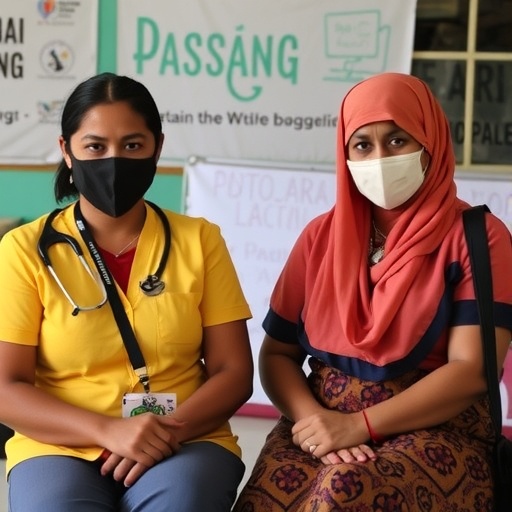
In neonatal intensive care units worldwide, platelet transfusions are a critical, life-saving intervention for vulnerable infants with thrombocytopenia or bleeding risks. Yet, the optimal platelet dosing strategies in this delicate population have long been debated, with concerns over excessive transfusions potentially leading to adverse outcomes as well as significant healthcare costs. Now, a groundbreaking quality improvement project conducted by Coletti et al. unveils a pioneering approach to platelet transfusion dosing for infants — standardizing a lower, weight-based dose of 10 mL/kg. This method promises not only remarkable cost savings but also reductions in donor platelet exposure without compromising safety or clinical effectiveness.
In their recently published study in the Journal of Perinatology, the research team meticulously investigated the impact of adopting a low prophylactic platelet transfusion dosage protocol within a neonatal care setting. The traditional transfusion paradigm often relies on higher volume doses, but through systematic interventions and data-driven clinical decision-making frameworks, the team implemented a regimen centered on precise weight-based calculations. Their results are nothing short of transformative for neonatal hematology and transfusion medicine, showing that smaller doses can maintain efficacy in preventing bleeding while significantly reducing platelet use.
The rationale for this shift to a 10 mL/kg dosage stems from a growing understanding of neonatal physiology and hemostasis dynamics. Neonates, especially preterm infants, possess distinct platelet function profiles and blood volume parameters compared to adults. Excessive platelet transfusions have been implicated not only in alloimmunization risks but also in inflammatory responses and potential volume overload. By carefully calibrating the dosing to a lower threshold, the researchers aimed to minimize these risks while ensuring adequate platelet counts to avert hemorrhagic complications.
.adsslot_yawnSkYO18{width:728px !important;height:90px !important;}
@media(max-width:1199px){ .adsslot_yawnSkYO18{width:468px !important;height:60px !important;}
}
@media(max-width:767px){ .adsslot_yawnSkYO18{width:320px !important;height:50px !important;}
}
ADVERTISEMENT
Key to the project was the integration of quality improvement methodologies tailored to neonatal clinical workflows. The team employed multidisciplinary collaboration, encompassing neonatologists, transfusion medicine specialists, nurses, and quality improvement experts to design, trial, and monitor the new dosing protocol. Interventions included standardized order sets, clinician education, real-time data feedback, and iterative adjustments based on outcome assessments. This holistic approach fostered adherence and created a sustainable model for clinical practice optimization.
Data collected over the study period vividly demonstrate that the 10 mL/kg platelet transfusion dose did not increase bleeding events or the need for repeated transfusions, challenging the longstanding dogma favoring higher-volume transfusions. Importantly, infants receiving the reduced dose exhibited comparable hemostatic stability, reinforcing the biological plausibility that lower volumes suffice given neonatal blood volume constraints and platelet function characteristics.
Beyond clinical outcomes, the economic implications of this dosing innovation are striking. Platelet products are expensive and in limited supply, requiring complex screening and handling protocols. By effectively halving or more the volume per transfusion, institutions can substantially reduce platelet utilization, alleviate supply strain, and redirect resources without compromising patient safety. These cost savings translate into optimized neonatal care delivery on both institutional and systemic levels, a win-win scenario in resource-intensive healthcare settings.
The study also highlights the importance of limiting neonatal platelet donor exposures. Each transfusion inherently carries immunological risks that accumulate with repeated exposures. By standardizing lower volume doses, the project decreased the cumulative immune system sensitization potential in this vulnerable population. This reduction in antigenic exposure may translate into better long-term outcomes, including reduced risk of alloimmunization and transfusion-related complications.
Statistically robust outcome tracking further bolstered the research findings. The team employed rigorous monitoring for intracranial hemorrhage rates, skin and mucosal bleeding, and laboratory platelet count stability post-transfusion. Their meticulous analyses strengthen the validity of the conclusions, providing the neonatal community with compelling evidence to consider revising transfusion protocols nationally and internationally.
Moreover, this initiative underscores a paradigm shift in neonatal transfusion medicine—from a one-size-fits-all approach to evidence-informed, patient-tailored interventions. Technologies enabling precise volumetric dosing, combined with heightened clinical awareness, empower clinicians to adopt strategies that balance efficacy with safety and stewardship of scarce resources.
Given the pressing need for scalable, cost-effective neonatal interventions, this study may catalyze widespread adoption of low-dose platelet transfusions globally. Especially in resource-limited settings where platelet product availability is a major constraint, adopting such protocols could improve equity in care and survival rates for critically ill infants.
Furthermore, the research opens avenues for future investigations into optimal dosing thresholds stratified by gestational age, clinical condition, and concomitant therapies. It also sets the stage for randomized controlled trials to corroborate these promising findings and extend them to broader neonatal populations.
From a translational medicine perspective, this quality improvement project exemplifies how operational research integrated with clinical expertise can yield pragmatic solutions with immediate patient impact. The iterative refinement process, guided by frontline feedback and outcome data, serves as a replicable model for other domains within pediatric and neonatal care.
One of the notable strengths of this study is its real-world applicability. Unlike many controlled clinical trials that demand rigid protocols, the implementation-focused design facilitated seamless integration into routine care. This enhances the generalizability and scalability of the intervention across various hospital settings.
Another important facet concerns ethical stewardship. Minimizing unnecessary transfusion exposure aligns with the overarching principles of neonatology to avoid harm while maximizing therapeutic benefit. The careful balance struck here provides a blueprint for analogous efforts in neonatal pharmacology and supportive care.
The authors also draw attention to the potential environmental impacts associated with lower platelet usage. Reduced consumption correlates with fewer resource-intensive platelet collections, processing, and storage procedures, contributing indirectly to sustainability efforts in healthcare.
Clinicians, hospital administrators, and policymakers alike should examine these findings closely. Incorporating this dosing strategy may require updates to clinical guidelines, staff training programs, electronic medical record order sets, and inventory management systems to optimize outcomes seamlessly.
In sum, this pioneering research by Coletti and colleagues challenges entrenched neonatal transfusion practices by introducing a rigorously tested lower platelet dosing protocol tailored for infants. The demonstrated safety, cost-effectiveness, and operational simplicity mark a significant advancement in neonatal hematologic care. With growing pressures on healthcare systems to deliver high-value, patient-centered care, innovations like these are not only welcome but necessary to shape the future of neonatal medicine.
Subject of Research: Neonatal platelet transfusion dosing strategies and quality improvement implementation.
Article Title: An improvement project standardizing low prophylactic platelet transfusion dosing for infants.
Article References:
Coletti, K., Hershey, J.A., Devine, M. et al. An improvement project standardizing low prophylactic platelet transfusion dosing for infants. J Perinatol (2025). https://doi.org/10.1038/s41372-025-02347-5
DOI: https://doi.org/10.1038/s41372-025-02347-5
Image Credits: AI Generated
Tags: clinical effectiveness in neonatal transfusionscost-effective healthcare interventionsdonor platelet exposure reductionevidence-based transfusion practicesJournal of Perinatology research findingslow-dose platelet transfusions for infantsneonatal intensive care unit protocolspediatric hematology advancementsquality improvement in neonatal carestandardizing platelet dosing strategiesthrombocytopenia management in neonatesweight-based platelet transfusion dosing






